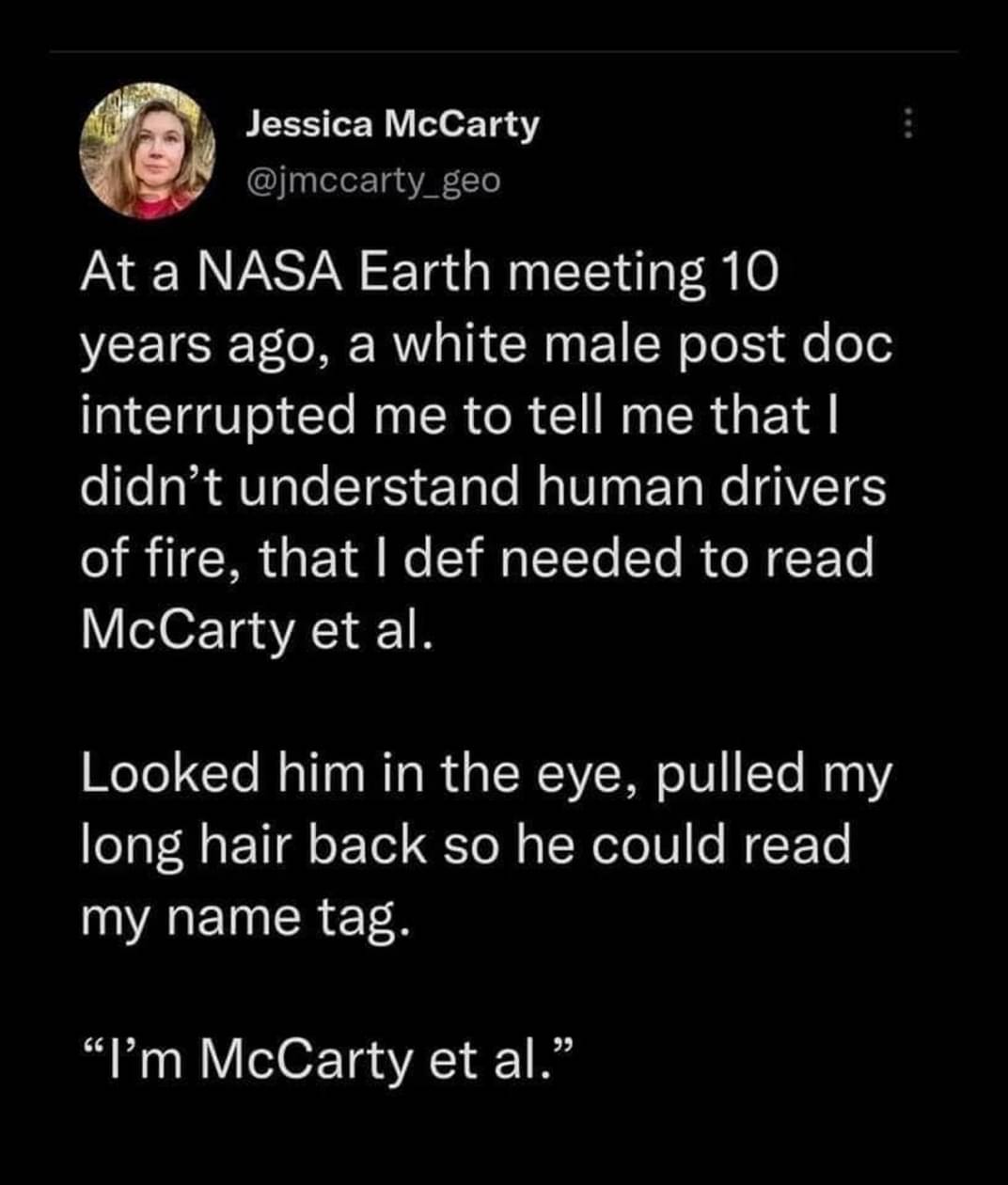this post was submitted on 21 Mar 2024
7 points (100.0% liked)
Science Memes
10348 readers
1756 users here now
Welcome to c/science_memes @ Mander.xyz!
A place for majestic STEMLORD peacocking, as well as memes about the realities of working in a lab.

Rules
- Don't throw mud. Behave like an intellectual and remember the human.
- Keep it rooted (on topic).
- No spam.
- Infographics welcome, get schooled.
Research Committee
Other Mander Communities
Science and Research
Biology and Life Sciences
- !abiogenesis@mander.xyz
- !animal-behavior@mander.xyz
- !anthropology@mander.xyz
- !arachnology@mander.xyz
- !balconygardening@slrpnk.net
- !biodiversity@mander.xyz
- !biology@mander.xyz
- !biophysics@mander.xyz
- !botany@mander.xyz
- !ecology@mander.xyz
- !entomology@mander.xyz
- !fermentation@mander.xyz
- !herpetology@mander.xyz
- !houseplants@mander.xyz
- !medicine@mander.xyz
- !microscopy@mander.xyz
- !mycology@mander.xyz
- !nudibranchs@mander.xyz
- !nutrition@mander.xyz
- !palaeoecology@mander.xyz
- !palaeontology@mander.xyz
- !photosynthesis@mander.xyz
- !plantid@mander.xyz
- !plants@mander.xyz
- !reptiles and amphibians@mander.xyz
Physical Sciences
- !astronomy@mander.xyz
- !chemistry@mander.xyz
- !earthscience@mander.xyz
- !geography@mander.xyz
- !geospatial@mander.xyz
- !nuclear@mander.xyz
- !physics@mander.xyz
- !quantum-computing@mander.xyz
- !spectroscopy@mander.xyz
Humanities and Social Sciences
Practical and Applied Sciences
- !exercise-and sports-science@mander.xyz
- !gardening@mander.xyz
- !self sufficiency@mander.xyz
- !soilscience@slrpnk.net
- !terrariums@mander.xyz
- !timelapse@mander.xyz
Memes
Miscellaneous
founded 2 years ago
MODERATORS
you are viewing a single comment's thread
view the rest of the comments
view the rest of the comments

Well I'm here so I guess I'll answer.
There are many human drivers of fire, the first and foremost being, well you know, lighting a fire. And boy, do humans light a lot of fires.
Take for example, here is a map of active fires around the globe, right now:
First order human drivers of fire are things we actively or accidentally do to light a fire. Ignition is a fundamental for fire to happen, and humans cause WAY more ignition events than nature does. Things like a cook fire, burning brush or downed debris for management purposes, infrastructure like power lines or fueling stations, car accidents, lit cigarettes being thrown out etc.. etc.. The timing and frequency of these events directly influence the frequency of fires.
Second order drivers are things like vegetation management, home placing and construction, and other biophysical drivers. For example, introduction of invasive species like bromus tectorum, which burns very readily, represents more fine fuels in the environment. Yadayadayada more fires. Other things around vegetation management would fall into this category, such as the suppression of fire, or the psychical thinning of fuels in forests, or prescribed burns.
Are... are you McCarty et al., TropicalDingdong?
edit: !rimjobsteve@thiscommunitydoesntexistyet.poo
No no no, I'm an et al, just no any of those particular et al. I focus on wildfire risk and have read much on the topic. I've read McCarty and many more when it comes to understanding wildfire and wildfire risk. Some of my research focuses on wildfire risk, and spatial features as they relate to wildfire risk, so drivers becomes pretty important when it comes to wildfire risk modeling. I have taken several courses through NASA on the matter even though I don't focus on drivers directly.
This is the kind of thing I'm working on:
The nodes are features, the edges are weights. In this case I'm just looking at structure:structure risk.
I'm sorry, but you obviously don't understand wildfires. You should really try reading Tropical Dingdongs, Esq.